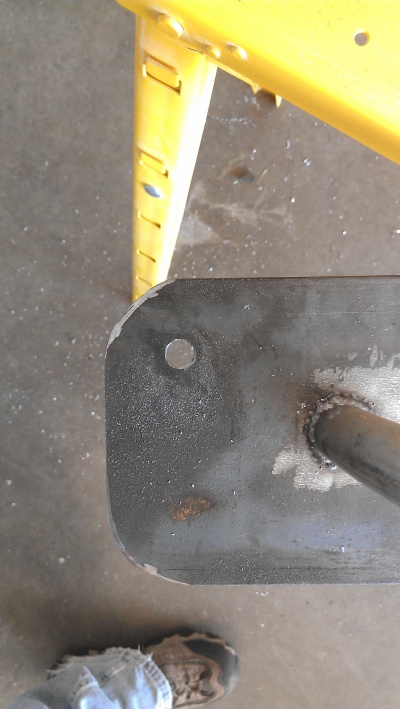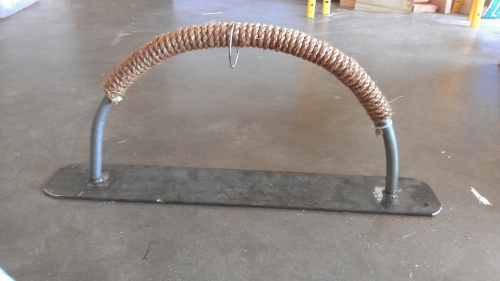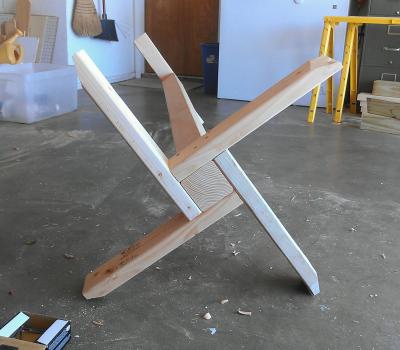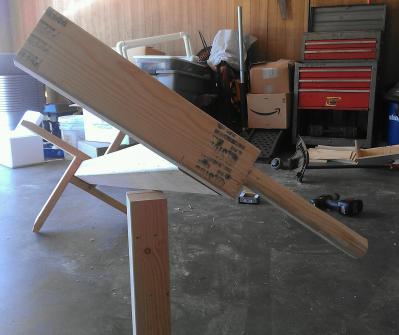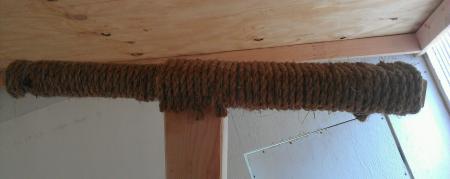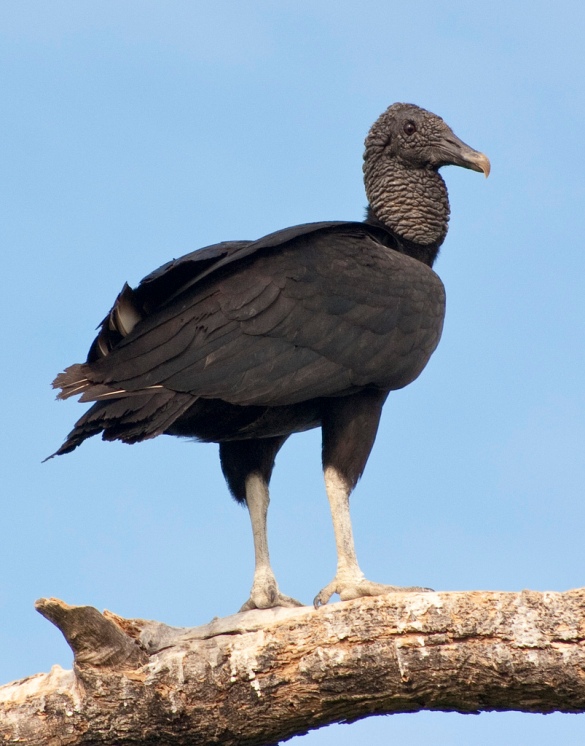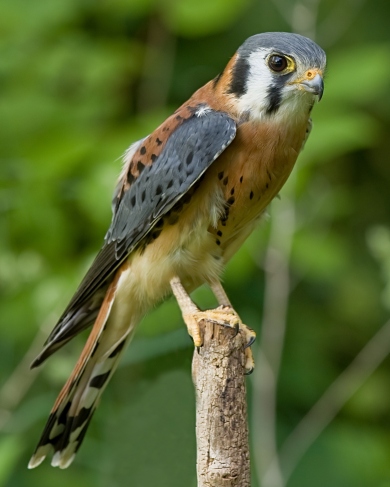Trapping your first hawk is arguably one of the most memorable experiences in falconry. My experience in particular is turning out to be quite memorable as I’ve had to put so much work into catching one. One the advice on basically everyone I’ve talked to I’ve trapped a red-tail for my first bird. They are apparently fairly scare in Northwest Arkansas this year, being more abundant in the eastern and southern portions of the state. Even veteran falconers I’ve talked to from other parts of the state have commented how few passage birds there are here. All told I’ve put in 20 hours driving over many days trying to find a bird in a trappable situation. This is in start contrast to two other apprentices in the state; one trapped his first bird within 15 minutes the first day he went trapping and the second took a bird on the first day as well.
Before I chronicle my trapping story I’d like to cover some basics about the state of affairs for an apprentice falconer, at least in Arkansas, though this will apply to many other states as well. Most apprentices in the United States trap a red-tailed hawk for their first bird, with a smaller, but not insignificant, percent taking an American kestrel. The federal laws recently relaxed the species permissible to apprentices; state law may me more restrictive than federal law though many states have adopted the federal species list, which, in addition to red tails and kestrels, allows red-shouldered hawks, Harris hawks, and great-horned owls to be taken (Alaskan apprentices are also allowed to take goshawks). This list wasn’t approved because of the ease of training, but rather because those species are increasing in population and any individuals taken by apprentices won’t affect the overall population. Great-horned owls, I’m told, are horrendous to train and generally don’t make good birds for any falconer, let alone an apprentice with little to no experience. I’m quite curious about flying red-shouldered hawks, their reputation is more mixed. Some people report them to be much more like Accipiters and Buteos, though there hasn’t been much work done with them. Red shoulders are supposed to be quite vocal, so much so that it may be a negative to taking one.

Red-shouldered hawk.
Photograph by Richard J Kinch, licensed under the Creative Commons Attribution-ShareAlike 3.0 License.
Apprentices are only allowed to trap wild birds because they are easier to train. General and Master class falconers are allowed to buy and hunt with captive bred birds, which makes getting some species significantly easier. Captive bred birds take significantly more work in training as they need to be taught how to hunt, unlike wild passage birds which have been hunting and feeding themselves for a few weeks to a few months. In addition, when raising an imprint bird (that is, a bird that is not raised by it’s parents and is therefore imprinted on humans, making it either think it is a human or humans are birds) it is extremely easy to screw the bird up. One meal that is even a few minutes late, one hunger pang, one wrong impression and the bird could turn into a vicious beast that screams incessantly, begging for food and attacking you if it doesn’t get it. On the other hand, a properly raised imprint can be the best falconry bird ever. It’s a gamble, one that the law (quite rightly I think) doesn’t let apprentices make.

Harris’s hawks are considered quite easy to train. In the wild they are sociable and hunt in packs. This naturally lends them to use in falconry, where they can be hunt in casts and consider the falconer part of their pack.
Photograph by Alan Vernon, licensed under the Creative Commons Attribution 2.0 Generic license.
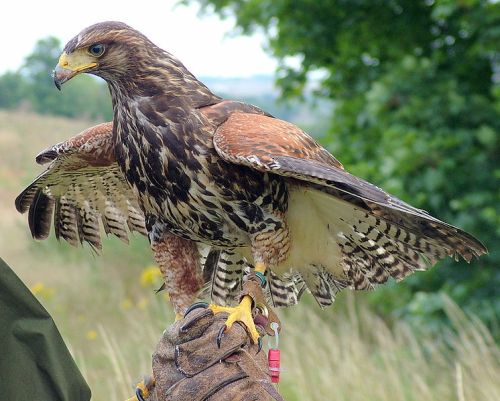
A Harris’s hawk being used in falconry. This bird may be the hybrid of a Harris’s hawk and Buteo species.
Photograph by Reg McKenna, licensed under the Creative Commons Attribution 2.0 Generic license.
Now then, one with my own story.
Saturday, 16 November
I didn’t realize how long it would take to tie the nooses for a Bal-Chatri trap. I started tying them Thursday night thinking I’d finish then or on Friday, but that didn’t happen. All told it took approximately 8 hours to cut and tie to nooses. I drove around for 3 hours that afternoon and evening. It was quite warm and windy. The first bird I saw was soaring over the road. That set the tone for the rest of the day. I saw another bird hunting over a field, but it was along a major highway and there was no good spot to pull over. I did pull into the parking lot of a construction company near the field, hoping that the bird would pass over the lot and see my trap. I waited for 30 minutes or so, watching as two other passage RTs and a haggard RT also started hunting the field. One of the passage birds was a Harlan’s hawk, which would have been great to catch, but it and the other passage and haggard eventually moved off. The first passage bird dove into the grass not 20 yards from my trap and caught something, so I picked up my trap and moved on. I saw two more haggard RTs before it got dark.
Sunday, 17 November
Went to church and missed trapping in the morning. Left around 2:00 pm and headed 30 minutes north towards the NWA airport. There are a lot of fields, mostly cow pastures, and forests around the airport and I thought this would be a good place to check. I saw two haggard birds, both in untrappable situations. The first was in a tree in someone’s back yard and the second was on the ground next to a pond in a different family’s front yard. The only passage bird I found was on a power pole along a busy road with a 55 mph speed limit. I still tried for it and got the trap out, but the bird didn’t react to the bait. After 10 minutes I got antsy because the road was so busy and picked up the trap.

Harlan’s hawk, a very dark subspecies of the red-tailed hawk; some people consider them to be a separate species. The tail is variable and often doesn’t have any red.
Photograph by Tom Ryan, copyrighted© by photographer.
Tuesday, 19 November
I decided to go into work late and drove along the interstate. I saw over a dozen RTs. The speed limit is 70 mph though. There aren’t power poles along the road either, all the birds were in trees or bushes, so by the time I saw each I didn’t have time to slow down. I was also really apprehensive about trapping along such a busy highway, for both legal and safety reasons.
I did see a gorgeous juvenile red-shouldered hawk along the side of a country road. I considered trapping it for a short while and decided not to.
Saturday, 23 November
In the morning I drove around for 3 hours and didn’t find any passage hawks in trappable situations. I took my labmate Ray along in the afternoon, he’s got an eye for birds. He found two dozen or more birds, but most were at the backs of fields and none were really trappable. One bird we found was a gorgeous Harlan’s hawk. We chased it around for an hour or so, trying to get it to see the trap. It was very skiddish and flew off whenever we got within 100 yards. We eventually gave up when it flew to the far corner of a field. We decided later it was probably an adult anyhow.
We found another passage red-shouldered hawk and I again considered trapping it, but passed. That bird was much less skiddish than any of the red-tails we saw; we got within 10 yards of it, and it never flew off.
Sunday, 24 November
I got out right before sunrise and went to a dead-end road we’d seen a bird before. It was still there and I threw the trap out. I had to drive over a slight rise in order to get far enough away from the trap. The bird dove at the trap but didn’t commit. I waited another 5 minutes and it dove again. I couldn’t see the bird as it was over the rise, but waited what felt like a minute, but was probably only twenty seconds. I didn’t see the bird, but it wasn’t long enough. As I approached where I thought the trap was the bird exploded from behind the rise, untrapped.
In the afternoon I threw the trap out at two birds. The first went for the trap but didn’t commit. The second bird was scared off by a semi-truck that rumbled over the hill just as it started its dive, which was truly unfortunate timing.
Monday, 25 November
I went out in the morning before work to try and trap a small passage bird Ray and I had found near an interstate interchange. It was sitting in a tree on a dead-end road near the interchange, which was perfect. I threw the trap out and was promptly ignored for half an hour before the bird flew off.



